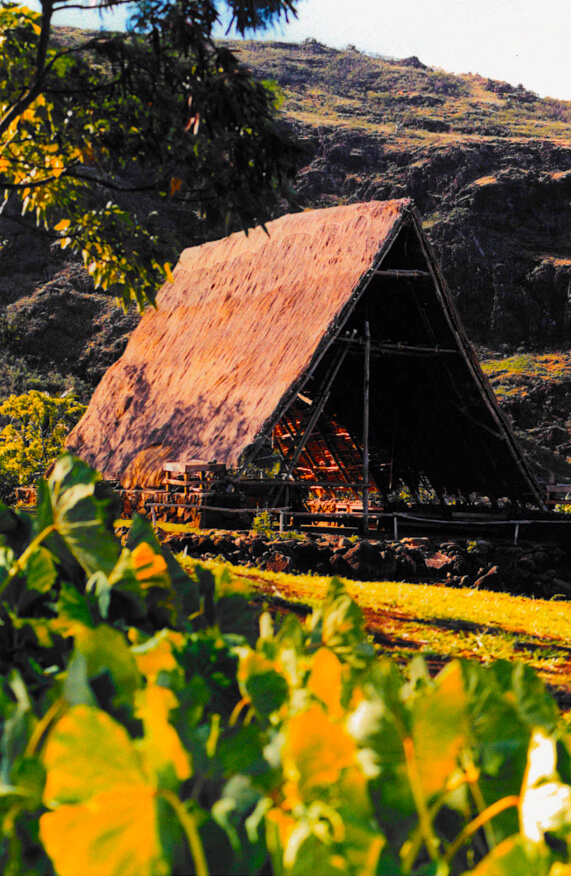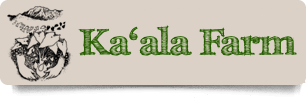Moʻolelo
Our Story

The roots of Kaʻala Farm and its Cultural Learning Center reach back to the early 1970s, when a group of alienated youth involved with the Waiʻanae Rap Center began hiking in the uplands of Waiʻanae Valley. There, they stumbled upon rock terraces. Unversed in their culture, they didn’t recognize them as loʻi kalo (wet taro fields). But they took the time to find out what they were, and soon shifted their focus.
With machetes, picks and shovels, they threw themselves into the backbreaking effort of restoring the oasis of old. By replanting kalo and connecting with the life cycles of ʻāina (land), they hoped to give new meaning to their lives. Ultimately, their goal was to create a parallel economic and cultural system, based on the traditional values of hard work, cooperation and respect.
Over the past 20 years, Kaʻala Farm has offered a stable, enduring anchor for the community. Rather than simply lamenting problems, its founders have seized opportunities. The Children’s Education Program provides elementary school children a hands-on opportunity to experience Hawaiian culture by planting kalo, making poi, creating kapa (bark cloth) and learning from kūpuna in the ancient oral tradition. Waiʻanae High School students in the Hawaiian Studies Program work with Kaʻala staff and volunteers to map pre-contact archeological sites and revegetate coastal and valley areas with native Hawaiian plants. Reaching out to the adult community, Kaʻala offers work therapy at the Learning Center for substance abusers and guided tours to interested visitors from Oʻahu, the neighboring islands and beyond.
Today, Kaʻala Farm continues to reach out to the community and its future – the children – in order to connect them with their cultural heritage. Forever looking for new and innovative ways to foster the Hawaiian spirit in all Hawaiʻi’s inhabitants.
